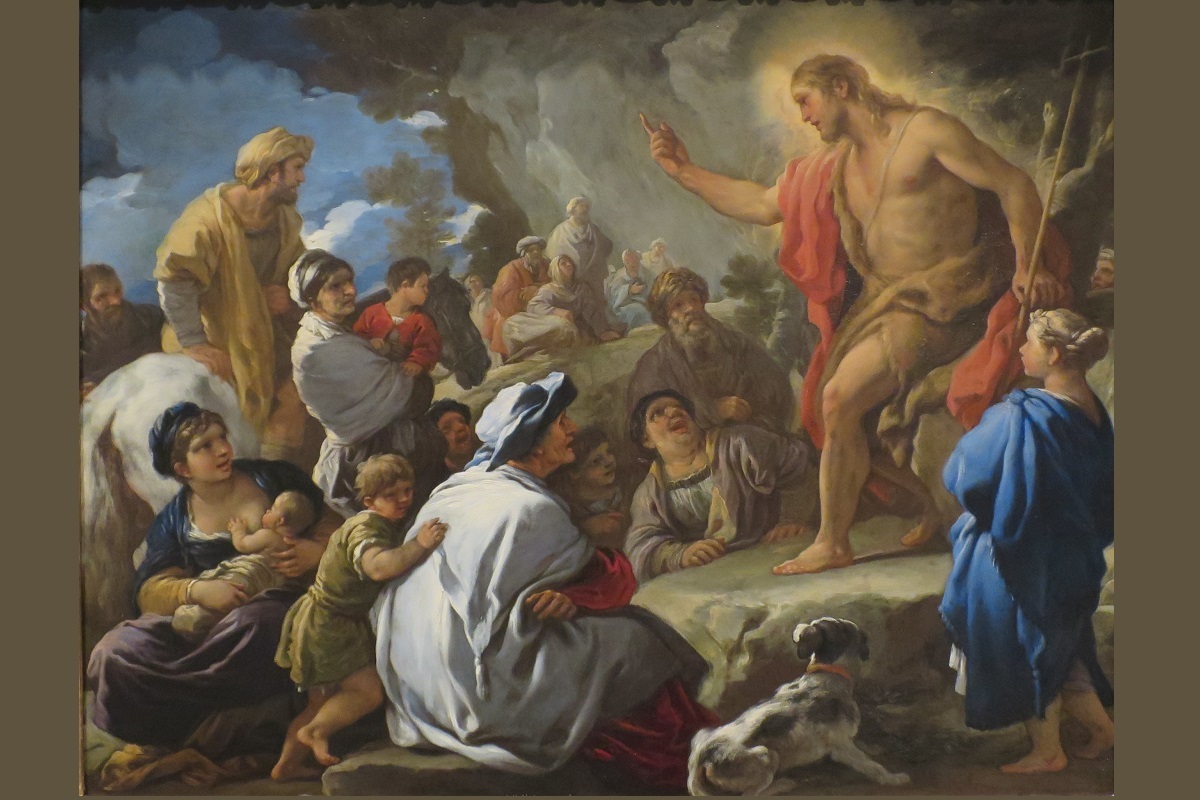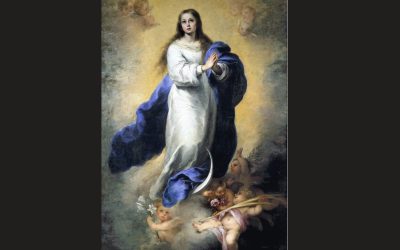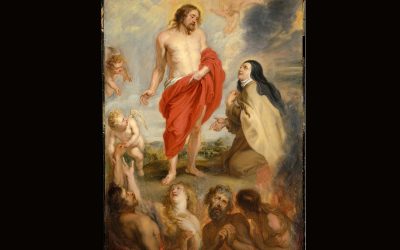By Vir Christi
Many Catholics, myself included, will often feel a little guilty thinking about Advent. It’s a liturgical season that’s difficult to focus on, especially given its uniqueness of character. It doesn’t make us think of radical fasting and abstinence, like Lent, but neither is it at the level of the great solemnities of Christmas and Easter. Something different has to be done, but what?
Most of us content ourselves with using Advent as a placeholder, marking time until Christmas and the Christmas season arrives. We sing Christmas carols boisterously (and in my case frequently off-key), hang Christmas decorations, and give serious thought to Christmas presents. But Advent is so much more meaningful than a mere time-marking season. It’s the embodiment of what John the Baptist cries out in the desert:
“Prepare the way of the Lord, make His paths straight” (Mark 1:3).
Prepare the Way
Lent and Advent share a common trait: they’re seasons of preparation for the two most important solemnities of our Faith. But there’s a key distinction between them that’s so small most people miss it.
Advent is a spiritual increase, a time of preparation. Advent demands a change of behavior on our part, but a change of addition. How can we increase the depths of our spiritual life by adding things to it?
Lent is a season of subtraction. We fast from necessary things and sacrifice luxuries or pleasures as an act of love ordered towards God and the community of the Church. Our focus is on denying ourselves worldly pleasures, so that we can more fully appreciate the joy of the Easter celebrations. Beyond that, it’s also a reminder that denial of self in this present life leads to the eternal joy of the Resurrection in the next.
In Mere Christianity, C.S. Lewis discusses the difficulty of the spiritual life by comparing our hearts to homes. God comes and makes His dwelling within us, and at first much of the work that He does makes sense. He is “getting the drains right” and “stopping the leaks in the roof.” But then He begins aggressive reconstruction of the heart, tearing out things that don’t belong while replacing them with new things. Lewis describes this—accurately—as a painful process that’s much more difficult for us to accept. All of this work is necessary.
Lewis’ work inspired me to a deeper reflection on Advent and Lent. Advent and Lent are both seasons for spiritual growth. Advent handles the additive part of the growth and expansion of the human heart. Lent helps cut out those practices or those traits in us that keep us from growing to our full potential and which could potentially destroy the castle that the Lord is trying to build.
Taking on additional spiritual practices in Advent is the equivalent of throwing the doors of our hearts wide open to the Lord. It’s our way of telling Him, “Come and stay with me, Lord.” It fills our hearts with an eager sense of anticipation, which builds to its joyful climax on Christmas Day.
Prepare the way of the Lord!
Make His Paths Straight
If we’re throwing the doors of our hearts open and begging the Lord to come in, it makes sense that we should make the path in as smooth as possible. We can oftentimes over-complicate this issue. Sometimes making the path straight does mean getting rid of certain practices in our lives that keep us from drawing close to Jesus. But in the spirit of Advent, this means re-evaluating everything that we have in our lives already and seeing it as a gift. In the season of Christmas, we will celebrate the greatest Gift of all, God come to live among us. Advent is an opportunity to be more intentional in our practice of gratitude, by recognizing disguised gifts for what they truly are.
Think of someone in your life that you’ve had a difficult time with recently. This could be a coworker, family member, or neighbor. They are a gift. We tend not to view nuisances in our lives as gifts but as pitfalls to our own growth in holiness. But what if we looked at them as gifts? What if, instead of seeing the people or the circumstances that have been giving us a difficult time as stumbling blocks, we saw them as graces? Would gold be as valuable if it wasn’t purified by fire? We wouldn’t be holy if we didn’t have opportunities to grow in our faith through struggle and trial. Making the paths of the Lord straight means going out of our way to smooth His way before Him. When we increase in disproportionate anger, resentment, and other vices, we make His path rough before Him. When we actively strive to cultivate charity and other virtues towards difficult people in our lives, we are making the path smoother.
Make straight His paths!
A Time of the Lord’s Increase
Saint John the Baptist best captures the spirit of Advent when he speaks of Christ in this way: “He must increase, but I must decrease” (John 3:30). I mentioned a few things above that are good practices to cultivate during Advent. But what are some other things that we can do to have a fruitful Advent?
First, there are especially good lectio divina opportunities in Advent. Pick a passage from Scripture each day—it can be from the Gospels or elsewhere—that points to the Incarnation, and sit with it. See it through the eyes of the characters in the passage. Ponder Mary’s wonder at the news of Saint Gabriel (Luke 1:26-38). Consider Joseph’s earnest striving to be obedient to the will of God in confounding circumstances (Matthew 1:18-25). Imagine yourself among the shepherds in the field, who were the first witnesses to the newborn King of Kings (Luke 2:8-20). These are just a few examples of ways that you can read the Scriptures and cultivate a prayerful spirit of joy throughout the Advent season.
Second, figure out a devotional practice that you want to get better at and find a way to incorporate it into your life. You don’t have to go overboard; in fact, if you try to do too much you’re more likely to give it up quickly. For example, you could make a commitment to pray the Angelus three times a day. It doesn’t take a lot of time, but in those few minutes each time you pray it you’ll be meditating on the mystery of the Incarnation. Or here’s another idea: when you pray the Rosary, commit to praying the Joyful Mysteries every day of Advent. Little things like that may not seem like much, but they build tremendous graces in the heart.
Lastly—and this can’t be stressed enough— extend charity as much as possible to the difficult people in your life. We should be doing that all the time, but Advent carries a special significance for that action. Jesus comes to make all things new, and He comes as the Prince of Peace. Your willingness to extend charity to the most difficult of your neighbors, even if it won’t be reciprocated, is a sign of true love of Our Lord. That might not be inspiring to the person you’re extending it to, but I promise you that someone somewhere notices it and is inspired by it.
Don’t be discouraged if you feel like you can only manage a small thing during Advent. Remember, Our Lord didn’t come to Earth as a giant; He came in meek and lowly state. He will appreciate even the smallest gesture.
May you have a holy Advent!

Vir Christi
Vir’s heart has been on fire for the Church from day one, and he dreams of the day when Constantinople will be a city again. He has a competitive drive satiated by sports and board games, but is also just as happy to sit down and read a good book for hours on end.






Loved these Advent suggestions. We all need them.